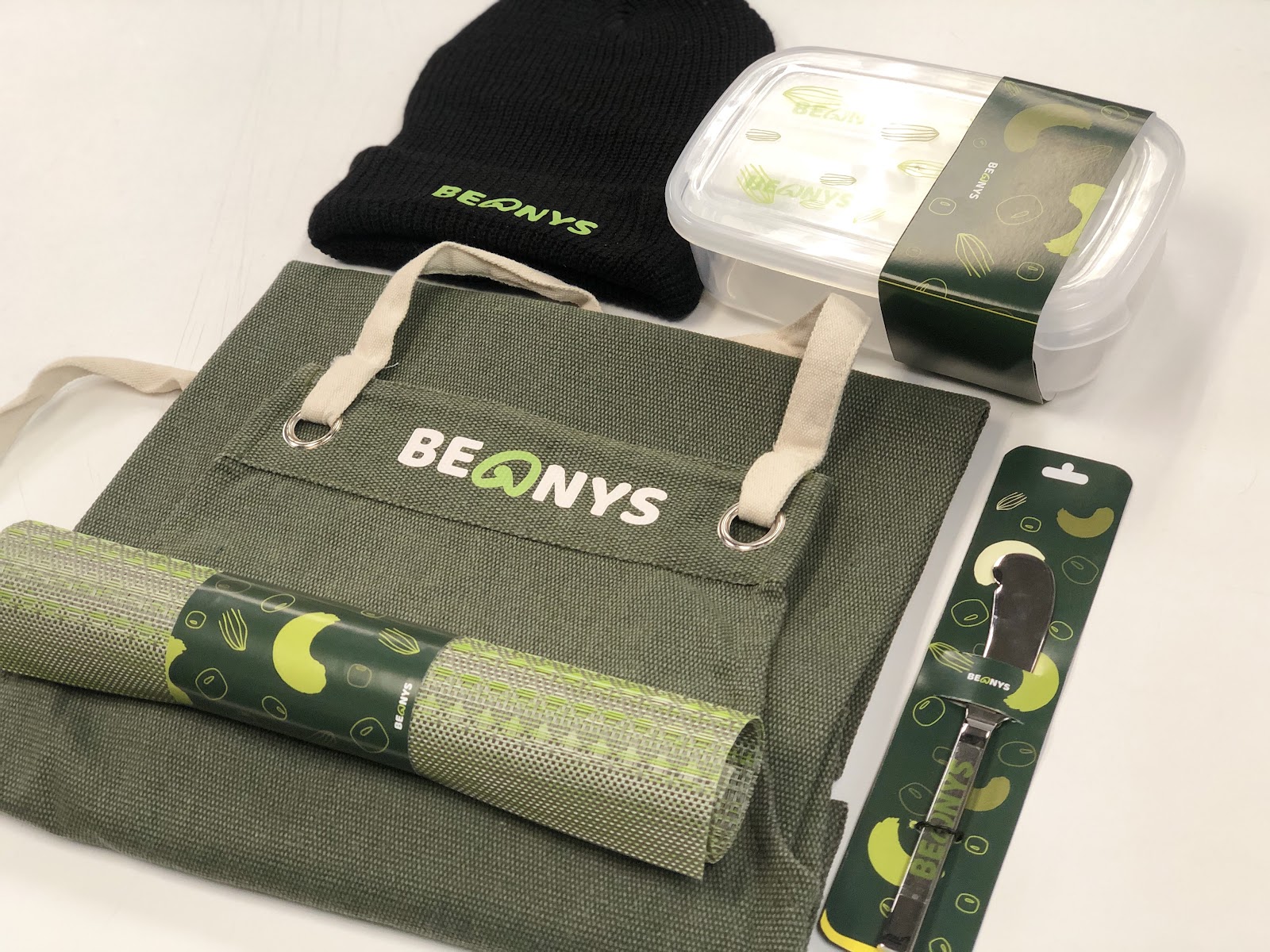PACKAGING AND MERCHANDISING DESIGN – FINAL PROJECT
29.08.19 –
Week X – Week X
Feryn Juliesta Sulia (0336407)
Packaging and Merchandising Design
Final Project
LECTURES
Lecture 11: –
07.11.19 (Week 11)
No lecture this week.
Lecture 12: –
No lecture this week.
Lecture 12: –
14.11.19 (Week 12)
No lecture this week.
Lecture 13: –
No lecture this week.
Lecture 13: –
21.11.19 (Week 13)
No lecture this week.
No lecture this week.
INSTRUCTION
FINAL PROJECT
For our final project, we need to design 5 merchandises for our food product.
We listed a few items that we thought are possible as our product merchandises and consulted them with Mr Shamsul, after consultations and discussions, we finalised our merchandise list such as:
- Beanie
- Lunchbox
- Spread knife
- Table matt
- Apron
Here's our label design for lunchbox, knife, and table matt.
We listed a few items that we thought are possible as our product merchandises and consulted them with Mr Shamsul, after consultations and discussions, we finalised our merchandise list such as:
- Beanie
- Lunchbox
- Spread knife
- Table matt
- Apron
Here's our label design for lunchbox, knife, and table matt.
 |
| Brainstorm and Progress |
| Knife Label |
| Lunchbox Label |
| Table Matt |
For beanie and apron, we printed this design directly on them. (These are not the actual shape of the merchandise).




Final outcome;
Then we made a box to display the merchandises, but it didn't turn out well since the construction of the box wasn't well.
| Box Attempt |
| Box Attempt |
 |
| Final Box |
 |
| Merchandises in the box |
 |
| Merchandises and packaging in the box |
FURTHER READINGS
Merchandise Types and Examples – Reflektion
Merchandising is the practice and process of displaying and selling products to customers. Whether digital or in-store, retailers use merchandising to influence customer intent and reach their sales goals. Establishing the right merchandising strategy can depend on a variety of factors, such as sector, product qualities, available space, and whether the retailer is displaying in a physical or digital store. Additionally, there are various schools of thought on which types of merchandising are most effective in particular industries and departments.
Product merchandising involves all promotional activities used to sell a product. Product merchandising can refer both to in-store or online products. Although often incorrectly used as a synonym for service merchandising (the promotional activities used to sell services), product merchandising can also refer to either physical or digital products. For example, the definition of product merchandising applies whether you are merchandising shoes in-person or online, and even if you are merchandising a product that isn’t physical, such as an eBook. Additionally, because product merchandising refers to both in-store and digital, it includes all promotional activities that take place in a store (such as shelf displays and end caps) and online (such as web design and on-site search)
Retail merchandising refers to all promotional and marketing activities that in some way contribute to selling products to customers in a physical retail store. The definition here is limited to the physical, but it can be applied to a variety of merchandising venues—from traditional brick-and-mortar malls to annual pop-up events. However, with the continued rise of digital merchandising, the term retail merchandising is increasingly being used to describe digital merchandising as well. This trend is likely to continue, especially because research suggests that 2017 will be the first year in history that digital retail sales will surpass in-store retail sales.
Visual merchandising in the retail industry refers to all of the display techniques used to highlight the appearance and benefits of the products and services being sold. Visual merchandising can include elements of spacing, lighting, and design, and is a term that can be applied both to in-store merchandising and online merchandising. In regards to the in-store retail experience, visual merchandising includes aspects such as floor plan layout, colour palette selection, three-dimensional displays, and product and banner alignment. In regards to the digital retail experience, visual merchandising includes aspects such as web design, the use of GIFS and video, and any other visual design element used to highlight the features and benefits of a product or service.
Digital merchandising involves all promotional activities used to sell a product online. Often referred to as eCommerce or online merchandising, digital merchandising can include everything from site performance and digital product displays to digital marketing and email marketing initiatives. Unlike terms such as retail merchandising, which were originally used to describe the in-store experience but are now expanding in their definition, digital merchandising is rooted 100% in the digital retail experience. That said, as the in-store and digital experiences continue to merge, the digital experience may also occur in physical stores. Take, for example, Bonobos. They started out as an eCommerce store, but now also offer physical stores referred to as Bonobos Guideshops. No physical merchandise is sold in these stores. Instead, associates help customers find clothes and discover their fit before asking the customer to place a digital order.
eCommerce, also known as electronic commerce, digital commerce, or internet commerce, refers to the buying and selling o... More
Omnichannel merchandising refers to creating a unified customer experience across all possible touchpoints of the customer journey. For retailers with physical and digital stores, omnichannel merchandising involves creating a seamless customer experience—even if the customer moves from one to the other (as in the Bonobos example above). Omnichannel merchandising (also referred to as omnichannel retailing) is a topic of increasing interest and research—especially because physical stores are increasingly embracing digital. Additionally, omnichannel retailing is often used to describe all of the elements within a single customer journey—regardless of where each element takes place.





Comments
Post a Comment